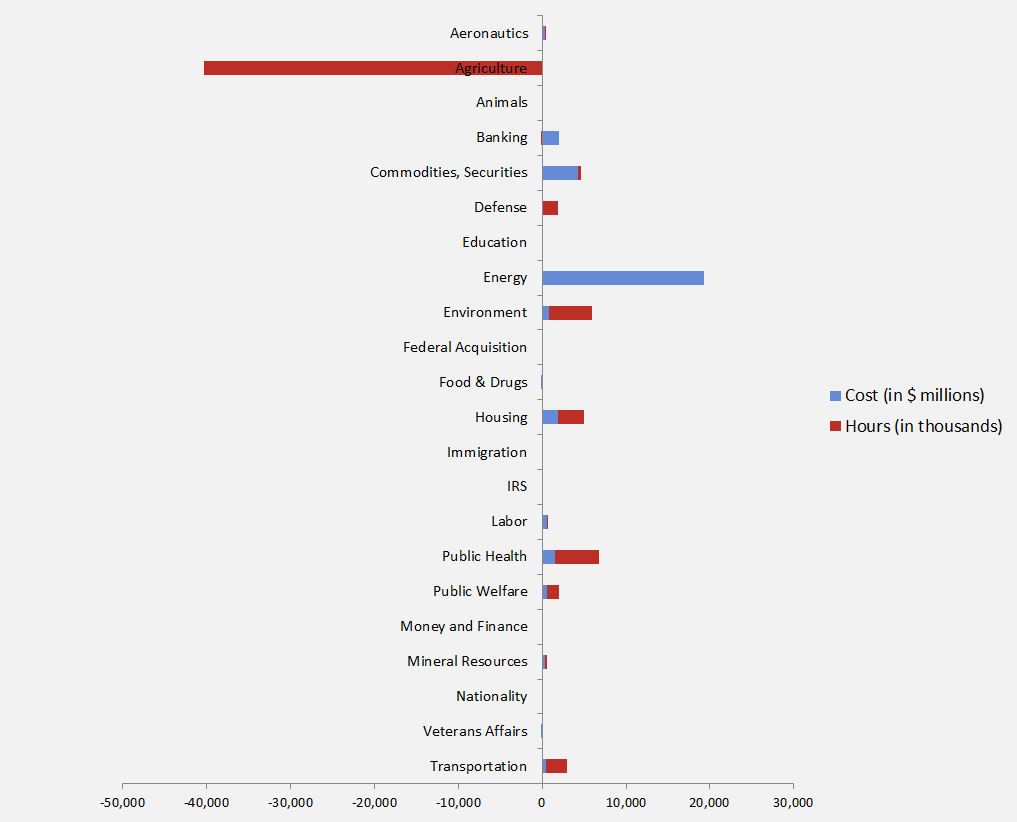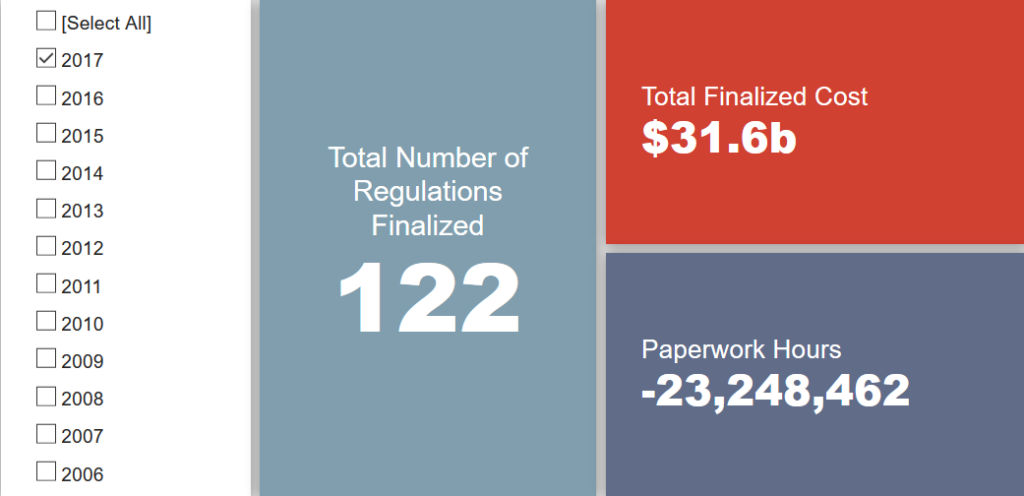Week in Regulation
July 10, 2017
A Deregulatory “Out”
A quiet week in regulation produced one final deregulatory action and minimal overall costs. For the week, total costs (proposed and final) were just $6 million with roughly 180,000 paperwork burden hours. Regulators did not monetize the benefits of these measures. The per capita regulatory burden for 2017 is $449.
Regulatory Toplines
- New Proposed Rules: 30
- New Final Rules: 81
- 2017 Total Pages of Regulation: 31,714
- 2017 Final Rules: $31.6 Billion
- 2017 Proposed Rules: $114.2 Billion
The American Action Forum (AAF) has catalogued regulations according to their codification in the Code of Federal Regulations (CFR). The CFR is organized into 50 titles, with each title corresponding to an industry or part of government. This snapshot of final rules (a change from earlier versions) will help to determine which sectors of the economy receive the highest number of regulatory actions.
The lone notable regulation of the week was a deregulatory “out” from the Department of Health and Human Services (HHS). According to the agency’s analysis under Executive Order 13,771, “[W]e have estimated the cost savings of this final rule for the PERM program to be $8,387,860.80…This rule is an E.O. 13771 deregulatory action.” This brings HHS’s regulatory total under the executive order to -$8.4 million, but there is a lingering proposed rule, which would cost $60 million, that is still not fully offset.
This week, OIRA concluded review of just two rulemakings and received two additional rules. OIRA received an interim final rule that would relax school lunch standards for milk, whole grains, and sodium. The administration also concluded review of a proposed rule for the 2018 renewable fuels standard. The economically significant measure also imposes unfunded mandates on the private sector.
Tracking Regulatory Modernization
On regulatory budget implementation, below are the agencies that have accrued annual savings or new costs (assuming this EPA rule counts toward the budget) under the president’s one-in, two-out budget; proposed rules are not included:
- Defense: -$400 million
- Interior: -$360 million
- Education: -$100 million
- Labor: -$78 million
- Veterans Affairs: -$1.9 million
- HHS: -$8.4 million
- EPA: $60 million
Many of these figures are the result of CRA resolutions of disapproval. Given their historic regulatory output, AAF can predict that Defense, Interior, and Education will likely meet the goal of $0 in net regulatory costs by the end of this fiscal year.
Affordable Care Act
Since passage, based on total lifetime costs of the regulations, the Affordable Care Act has imposed costs of $53 billion in final state and private-sector burdens and 176.9 million annual paperwork hours.
Dodd-Frank
Click here to view the total estimated revised costs from Dodd-Frank; since passage, the legislation has produced more than 74.8 million final paperwork burden hours and imposed $38.5 billion in direct compliance costs.
Total Burdens
Since January 1, the federal government has published $145.9 billion in compliance costs ($31.6 billion in final rules) and has cut 18.4 million paperwork burden hours (due to 23.2 million in reductions from final rules). Click below for the latest Reg Rodeo findings.












